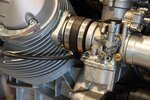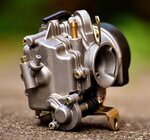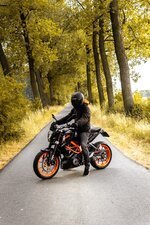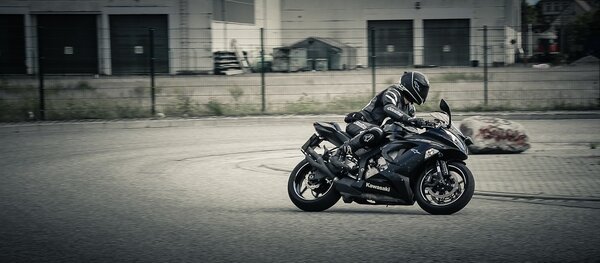You must understand that a choke is required to start your motorbike. But is it ok to ride a motorcycle with a choke on?
No, it’s not ok. Of course, your bike will continue to run with the choke on, but you should avoid this at all costs.
You might be thinking, why is that, and what can go wrong if you leave it on? In this comprehensive guide, we are going to show you why you shouldn’t do it.
All carbureted motorbikes come with a choke, and it’s there to restrict the airflow to your bike’s engine. This causes a rich mixture of fuel and air. Under normal operation, you only use this choke when you start your engine.
Let’s dig deep into this matter and understand whether it is ok to ride a motorcycle with a choke on or not, so keep reading.
Purpose of a Motorbike Choke

A motorbike choke assists you in starting your engine. It restricts the airflow to your bike’s engine. As a result, a rich mixture of fuel is created with reduced airflow, which helps your bike’s engine start easily.
If you have been dealing with starting problems during the cold weather, this choke will come in handy to start your engine without wasting too much time. This choke is a mechanical lever that is attached to your carburetor.
With its help, the carburetor estimates find out the ratio of air and fuel. The carburetor will adjust to this ratio with the help of throttle input from the rider. Also, you can manually adjust and reduce the airflow to your engine.
This choke is mandatory on all carbureted motorcycles as the engine needs different air-fuel ratios at various temperatures. Changes in air density make this happen, and so does the vaporization of gasoline.
Engines will not vaporize gas at cold temperatures as they would at operating temperatures. So, with the help of a choke, you can enrich the air-fuel mix by limiting the airflow. In addition, it will increase the vaporized fuel within the engine when you try to start it.
As soon as the engines warm up, it will help if you push the choke down. It will result in shifting the control of governing the air-fuel mix back to the carburetor.
Is It ok to ride a Motorcycle with A Choke On – What Might Happen?

So, is it ok to ride a motorcycle with a choke on? Well, you shouldn’t do it even if you have to do it to keep your bike running. But if you end up doing it once in a blue moon, it will not be that bad for your bike and its overall performance.
Leaving your choke on just for a single ride will not have any lasting impact on your bike. Instead, you will only notice your bike is running a lot richer than it usually does.
It will significantly deter your fuel economy for that particular ride. But if you continue to do this for months, you will end up fouling the spark plugs because of the rich air-fuel mixture.
This is precisely the reason why you shouldn’t leave your choke on intentionally.
Moreover, if you keep your choke on, it will increase fuel and air supply in your engine, and this will cause over-fueling. Over-fueling can cause other issues with your bike. For example, it might start running hotter. Your pistons will get damaged this way, and with the excessive heat, there will be misfires.
Your bike might also stall and will become difficult to restart. If this is the case, make sure you turn your engine off and then start it. This will preserve the fuel in your bike’s tank without disturbing the airflow.
Removing the choke

You need to wait for a few minutes before you remove the choke. The time is going to vary for different motorcycles, but usually, it’s around three minutes. So, normally, your choke will take a little longer than three minutes.
As soon as you get your engine running, you will notice it is not easier to ride your bike. So, if the bike is not starting, you need to turn it off and wait for another minute. After that, turn your bike on and start it again.
If you face problems starting your bike, keep an eye on the engine to check how long it’s been running before you take off. It might wear down the batteries or may also cause any other problem in your bike’s electrical system.
Motorbike Dies with the Choke Off

So, what to do if your bike keeps dying as soon as you turn the choke off? This is something that happens when you have a clogged pilot jet. And what is this pilot jet? Well, it’s an orifice within your carburetor, and it supplies fuel to your engine in low throttle conditions.
As soon as it gets clogged, your engine will continue to run with the choke on, but it will die as soon as you turn the choke off. Unfortunately, this problem doesn’t have a simple fix, and you will have to pour some additives to unclog the pilot jet.
But these days, gasoline also comes with numerous additives. So, there are very few chances that you might be able to unclog it by adding more additives. So, to fix the pilot jet, you will have to disassemble your carburetor, clean it thoroughly, and rebuild it.
How to Properly Use a Choke?
If you are a new rider, you might think it’s a bit difficult to learn how to use a choke properly, but it is quite easy in reality. You can find the choke of your bike is on the left side of the engine.
Pull the choke out and start your engine; as soon as the engine warms up, it’s time to push it back in its original position. And that’s all. This is all you have to do to operate a choke on your carbureted motorcycle.
Perhaps, a more important liaison is when you use the choke? You will only need to use the choke to start your bike and warm it up. Keep the choke engaged while your engine is warming up to the required temperature. You can leave the choke on for the first mile to allow the engine to warm up and then push it back down.
FAQ
Should I turn the choke off during my ride if I left it on accidentally?
So, should you turn the coke off during the ride if you have noticed you left it on accidentally? Well, this is not advisable because you can end up causing your bike to stall pretty badly. Instead, a better practice is to pull over and turn the choke off.
After that, wait for about five or so minutes before you start your journey again. This will allow your engine to reach the temperatures that it needs to work normally. You can also turn the throttle down and rev your engine up but do this with a lot of care.
Do all motorcycles come with chokes?
No, not all motorbikes come with chokes. However, older motorbikes do come with a choke, and they are set to default ON. So, you can turn it off, and if you disable it, it will cause you a few problems.
New motorbikes come with other fuel efficiency features, and you won’t find shocks in these bikes. In addition, fuel-injected motorcycles don’t come with a choke because they don’t have a carburetor in them. Instead, these bikes come with an ECU or engine control unit that determines the air-fuel mixture instead of a carburetor.
If your engine needs more air-fuel mix, this ECU will take care of it. This is why fuel-injected bikes start way easier than carburetor bikes in cold temperatures. But if you take care of your carburetor and keep it in good shape, your bike won’t have to deal with cold starts.
Is it mandatory to use the choke each time starting the bike?
Choke on your motorbike is there to help you to start your motorbike. Of course, in a hot climate, you might not need your choke to start the bike. But, on the other hand, you won’t end up hurting your bikes if you don’t use the choke when starting, and you certainly don’t need to use the choke each time, so it’s not mandatory, at least when the weather’s hot.
Conclusion
So, what’s the purpose of a choke? Is it mandatory to start each time with the choke? No, it’s not mandatory, and you won’t end up damaging the bike starting without the choke. It just allows you to start your motorbike with less effort, especially when the weather is cold.
But is it ok to ride a motorcycle with the choke on? Unfortunately, it’s a big NO because you are feeding the engine excess fuel, and over-fueling can have a devastating impact on your bike if you do it too frequently. Doing it unintentionally on rare occasions won’t have any adverse effects, though.


